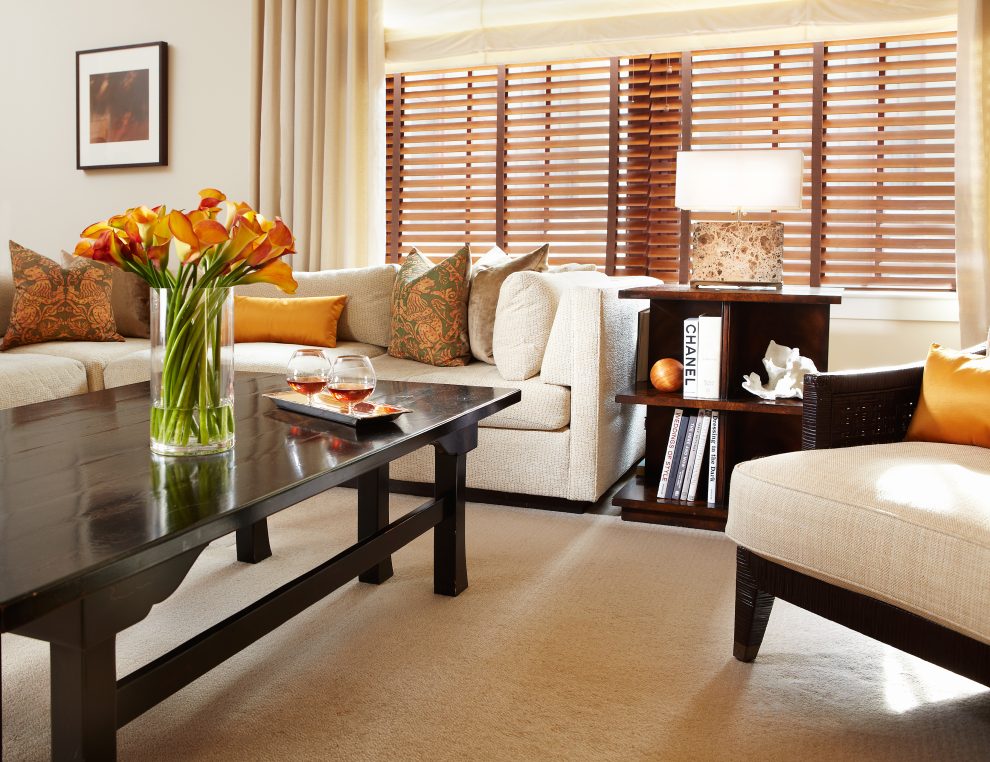Take a deep breath— there’s a smarter way to work. Today’s tenants and residents want environments that support well-being, comfort and sustainability. For property owners and managers, wellness design has shifted from a luxury to a smart investment.
Healthier buildings attract better tenants, add long-term value and stand out in New York’s competitive market. Whether you’re upgrading a building or planning improvements, these seven strategies will help create healthier interiors and stronger returns.
1. Prioritize Indoor Air Quality
Indoor air quality plays a critical role in how people feel, think and perform. In dense urban environments like New York, indoor air can be two to five times more polluted than outdoor air, making it a key concern for today’s tenants and residents.
In buildings with central AC, upgrading to MERV-13 or HEPA filters, increasing fresh air intake and choosing low-emission materials can significantly reduce airborne pollutants. In properties without central systems, portable air purifiers and operable windows, where available, can also enhance indoor air quality and occupant comfort.
Why it matters: Improved air quality supports health, reduces complaints and supports lease renewals.
2. Embrace Natural Daylighting
Access to natural light is one of the most requested design features across sectors. Studies have shown that daylight improves focus, mood and sleep quality. For tenants and residents alike, a sunlit space feels more expansive, comfortable and welcoming.
To improve daylight penetration — especially in high-use areas — consider reconfiguring layouts, minimizing window treatments, using light-colored surfaces and placing mirrors to draw light further into the space.
Why it matters: Sunlit spaces command a premium, lease faster and consistently appeal more to wellness-conscious tenants and buyers.
3. Upgrade Artificial Lighting for Comfort and Energy
Artificial lighting fills the gaps when natural light isn’t enough, but not all artificial lighting is created equal. Poor lighting can lead to eyestrain and fatigue, while well-designed lighting improves comfort and energy efficiency.
A layered lighting approach — combining ambient, task and accent lighting — improves flexibility and comfort. High-quality LED lighting with a high Color Rendering Index (CRI) more closely mimics natural light. In office settings, human-centric lighting systems that shift throughout the day can boost alertness and morale.
Why it matters: Efficient, human-centric lighting lowers energy use, increases tenant satisfaction and supports Well and LEED certification.
4. Design for Thermal Comfort
A space that’s too hot or too cold creates discomfort and dissatisfaction. Yet thermal comfort is often overlooked during design.
Smart thermal strategies include zoned HVAC systems, ceiling fans, radiant flooring and operable windows to give occupants greater control. In residential and mixed-use settings, programmable thermostats and passive shading can further enhance comfort while improving energy efficiency.
Why it matters: Thermal comfort boosts satisfaction, supports productivity and reduces complaints. Smart systems also improve energy performance and operational costs.
5. Control Noise, Enhance Focus
Noise is a top complaint in workplaces and multi-family buildings. In common areas and lobbies, acoustics matter more than ever.
Acoustic ceiling tiles, wall panels, rugs and upholstered furniture help absorb sound. In residential and mixed-use buildings, insulating walls and floors between units can reduce turnover by creating a more peaceful environment. Consider layout changes that minimize noise exposure for key areas like bedrooms, meeting rooms or wellness spaces.
Why it matters: A quieter environment improves focus, reduces stress and enhances long-term tenant comfort.
6. Build and Furnish with Healthier Materials
The materials that form a building, and the furnishings that complete it, have a lasting impact on indoor air quality and occupant health. Many standard products contain harmful VOCs, formaldehyde, phthalates and other toxins that can off- gas for years.
To create healthier interiors, specify low- or zero-VOC paints and sealants, formaldehyde-free cabinetry and substrates and FSC-certified woods. Third-party certifications like Greenguard and Declare provide added assurance.
For furnishings, choose pieces certified by Greenguard, OEKO-TEX Standard 100, or Certipur-US. Incorporating biophilic elements like wood textures and plants further enhances the sense of calm.
In our design for EQ3’s retail store in New York, we used low-VOC paints and finishes — principles that translate seamlessly to residential lobbies, amenity spaces and wellness-focused work environments.
Why it matters: Healthier materials and furnishings elevate design quality, support indoor air quality and enhance long-term value across residential, commercial and retail spaces.
Smart Strategy, Long-Term Value
Investing in healthier design is about more than wellness — it’s a smart performance strategy. Healthier properties lease faster, command higher rents and align with sustainability goals.
You don’t have to do it all at once. Even incremental improvements — upgrading filters, switching to low-VOC paint or revisiting your lighting plan — can make a meaningful difference.




















